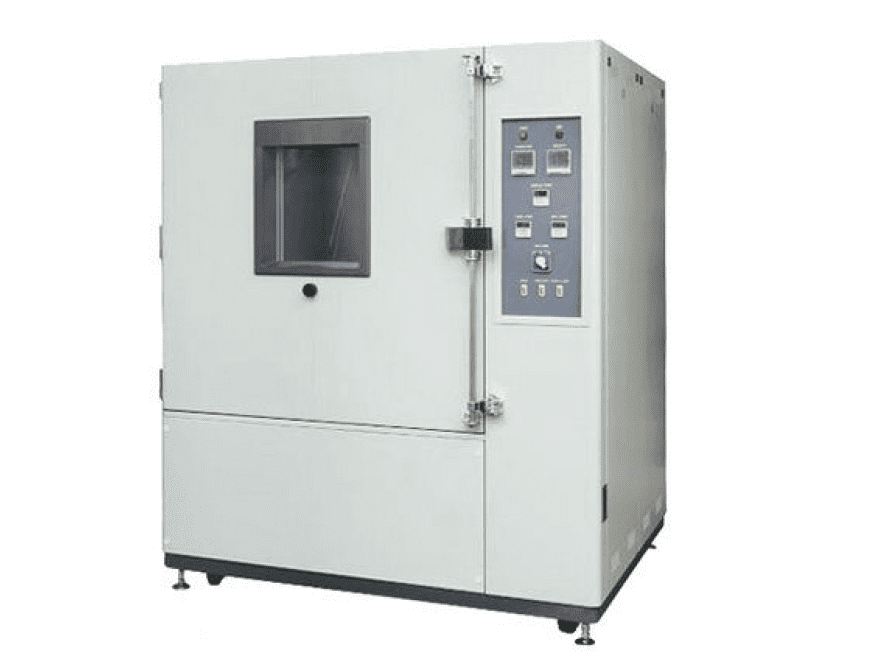Hot and cold test chambers are designed for testing, handling, and storing products and materials where temperature control is needed.
Pharmaceutical, car, biotechnology, telecommunication, electronics, defence medical devices, universities, military applications, and consumer products all use hot and cold chambers.
In laboratories, the Hot and Cold Test Chambers provided are used to monitor temperature and provide the best support for storing samples. The hot and cold chamber, which is supported by advanced technology, is ideal for use in areas that require rapid temperature changes.Among its features are the use of high-quality corrosion-resistant and easy-to-maintain stainless steel working chambers and housing supports, the ability to maintain precise and homogeneous temperatures, and temperature values of storage chambers calculated according to specified industry standards.

Features:-
• Rapid air circulation
• Durability
• Longer service life
• Heavy insulation
• Motorized forced air circulation
Hot and Cold Chambers are available to assist with specimen testing in a cooled or heated environment. The device uses computer-controlled chamber support to allow for the setting of static temperatures as well as temperature sweeps. Among its features are a software-controlled temperature control device capable of controlling static and dynamic temperatures, an integrated radiator, and the ability to detach chambers from the test instrument for other testing purposes.
How Do Hot-Chamber and Cold-Chamber Die Casting Differ?
Die casting is a casting process that involves pressing molten metal into the cavity of a pre-shaped mould. It is commonly used in the manufacturing industry. Base metals such as zinc, aluminium, copper, magnesium, and lead are heated to a molten state before being used. Pressure is then applied to the newly molten metal to push it into a pre-shaped mould. The molten metal is removed from the mould until it has cooled and hardened. As a result, there are two styles of die casting processes: hot and cold die casting.
Hot-Chamber Die Casting
The same method as hot-chamber die casting is used: molten metal is pushed through the cavity of a pre-shaped mould using pressure. Hot-chamber die casting is distinguished by the fact that metal is heated inside the casting process rather than in a separate machine or furnace.
Hot-chamber casting machines, also known as gooseneck machines, have a built-in furnace where metal is heated to a molten state. The molten metal is forced out of the furnace and into the die by a hydraulic-powered piston. The hot-chamber die casting process is relatively simple, with a typical cycle time of 15 to 20 minutes. It’s perfect for zinc alloys, tin alloys, and lead alloys, but not for metals with a high melting point.
Cold-Chamber Die Casting
The use of molten metal forced into a mould is still needed in cold-chamber die casting. Hot-chamber dies casting heats metal inside the casting machine, while cold-chamber die casting heats metal in a separate furnace and then transfers the newly molten metal into the casting machine.
In cold-chamber die casting, metal is heated to a molten state in a separate furnace before being cast. After that, the molten metal is transferred to the casting machine and fed into the machine’s chamber. The molten metal is forced into the cavity of the mould by a pressurised plunger.
Cold-chamber die casting is the only way to process those metals, such as those with a high melting point. Since the high temperatures needed to achieve a molten state for metals like aluminium, magnesium, and copper necessitate the use of a separate furnace, some manufacturers prefer cold-chamber die casting to hot-chamber die casting.
We deal with
Environmental Simulation Products
BOD Incubator
Cold Chamber
De Humidifier
Deep Freezers
Dust Chambers
Growth Chambers
Hot and Cold Chambers
Hot air Oven Chambers
Humidity Chambers
Reach in Growth Chambers
Salt Spray Chambers
Solar Chambers
Stability Chambers
Thermal Shock Chambers
Tray Dryer
Walk-in Cold Chambers
Walkin Environmental Chambers
Walkin Hot and Cold Chamber
Water Heated Jacket Oven



Leave a Reply